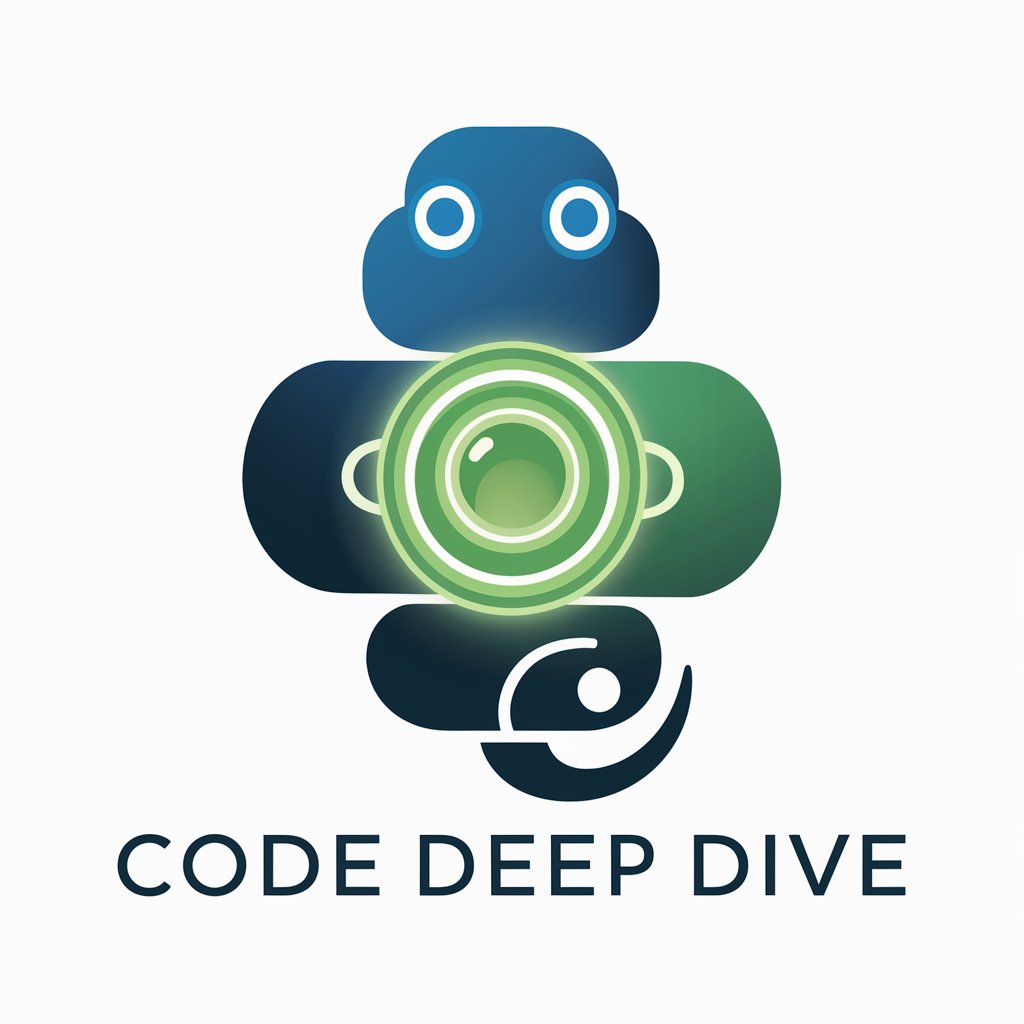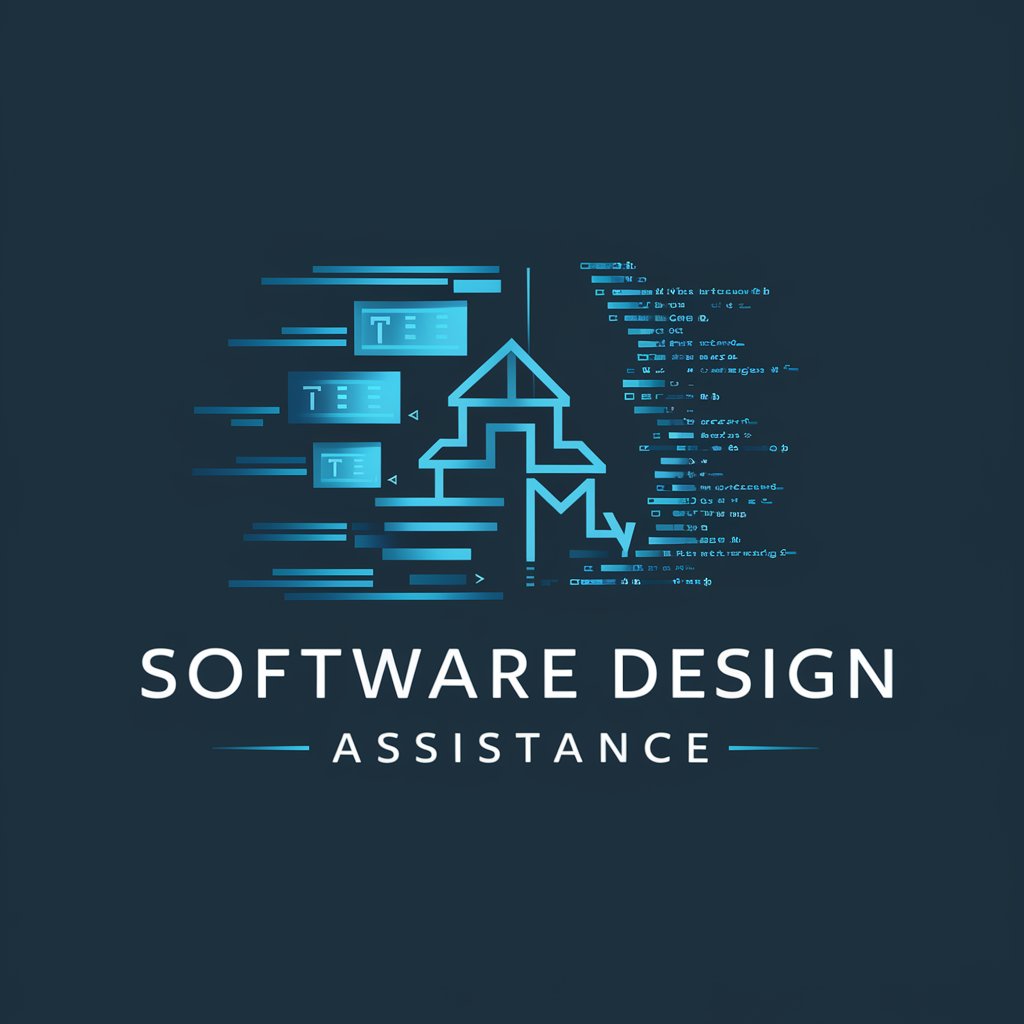Code Deep Dive - Python Code Analysis Tool

Welcome to Code Deep Dive, your Python code analysis companion.
Deep Dive into Code with AI-Powered Analysis
Explain the technical aspects of this Python function...
What are the roles of variables in this code snippet?
Describe the dependencies of this code unit within the larger codebase.
Analyze the purpose and expected behavior of this Python code block.
Get Embed Code
Introduction to Code Deep Dive
Code Deep Dive is a specialized GPT designed to perform in-depth analysis of Python code, offering a detailed breakdown of code snippets or complete files. It is engineered to dissect code into individual units, providing comprehensive insights on each part. This includes technical descriptions that cover syntax, structure, and programming concepts; functional descriptions that explain the role of the code unit within the larger codebase; and detailed analyses of variables used and generated, as well as dependencies on other functions. By providing this level of detail, Code Deep Dive aims to enhance users' understanding of their code, identifying potential improvements and facilitating debugging. An example scenario might be analyzing a function to identify inefficiencies in algorithm design, or explaining how a particular block of code integrates with and affects the rest of the application. Powered by ChatGPT-4o。

Main Functions of Code Deep Dive
Technical Description
Example
Explaining the use of list comprehensions over traditional for loops for efficiency.
Scenario
A user submits a snippet containing a for loop to populate a list. Code Deep Dive identifies and explains how a list comprehension could achieve the same result more succinctly and efficiently.
Functional Description
Example
Describing how a function serves as a data validation tool within an application.
Scenario
Analyzing a function, Code Deep Dive clarifies its purpose in validating user input before processing, explaining its role in the application's data handling flow.
Variables Analysis
Example
Identification and explanation of global variables affecting a function's output.
Scenario
When reviewing a code snippet, Code Deep Dive points out the use of global variables, explaining their impact on the function's behavior and suggesting encapsulation for improved modularity.
Dependencies Analysis
Example
Listing and describing external libraries a script relies on for data visualization.
Scenario
In a script designed for plotting data, Code Deep Dive identifies dependencies on libraries like Matplotlib or Pandas, explaining the role of each in the script's functionality.
Ideal Users of Code Deep Dive Services
Software Developers
Developers at all levels can benefit from Code Deep Dive by gaining insights into their code's structure and functionality, identifying potential improvements, and learning best practices.
Data Scientists
Data scientists can use Code Deep Dive to better understand the data processing and analysis portions of their code, ensuring efficiency and accuracy in their algorithms and data handling.
Educators and Students
Educators can leverage Code Deep Dive to teach programming concepts and code analysis, while students can use it to improve their coding skills and understanding of complex codebases.
Quality Assurance Engineers
QA engineers can use Code Deep Dive to understand the codebase better, allowing for more effective testing and identification of potential bugs or performance issues.

Using Code Deep Dive: A Step-by-Step Guide
1
Visit yeschat.ai for a free trial without login, also no need for ChatGPT Plus.
2
Upload Python code snippets or files directly to Code Deep Dive for analysis.
3
Specify your analysis needs, whether it's understanding a specific part or the entire code.
4
Receive an in-depth breakdown, including technical and functional insights of your code.
5
Utilize the analysis for code optimization, debugging, or learning purposes.
Try other advanced and practical GPTs
Software Design Helper
Empowering software design with AI

Free Antivirus Software 2024
Empowering security with AI-driven defense

Software Debugger
Empower your coding with AI-driven insights

O1 Visa Writer 2
AI-powered Visa Recommendation Crafting

Canadian Compass
Navigate Canada with AI-powered support

Immigration and Border Expert
Empowering immigration clarity with AI

D&D: 5th Edition Companion
Empower Your Fantasy with AI

SEO Outline Wizard
Crafting Rank-Worthy Content with AI

ProfGPT
Empower Your Mind with AI-Driven Insights

SOC Monkey
Empowering Cyber Defense with AI

Event Promotional Marketing Expert Agent
Elevate Live Events with AI-Powered Marketing

Logo Muse
Empowering Your Brand with AI-Driven Design

Frequently Asked Questions About Code Deep Dive
What types of code can Code Deep Dive analyze?
Code Deep Dive specializes in analyzing Python code, from small snippets to complete files, providing detailed insights into its structure and functionality.
How does Code Deep Dive ensure confidentiality of the code?
Code Deep Dive is designed with a focus on security and privacy. It analyzes code internally without storing or sharing it, ensuring the confidentiality of your data.
Can Code Deep Dive help with debugging?
Absolutely. Code Deep Dive can dissect your code, highlighting potential issues and offering insights that can aid in debugging and optimization.
Is Code Deep Dive suitable for beginners?
Yes, Code Deep Dive is an excellent tool for beginners, providing clear explanations and insights that can accelerate the learning process in understanding Python code.
Can Code Deep Dive help in understanding complex codebases?
Definitely. Code Deep Dive is ideal for dissecting complex codebases, offering clear and detailed analysis that simplifies understanding of intricate code structures.
